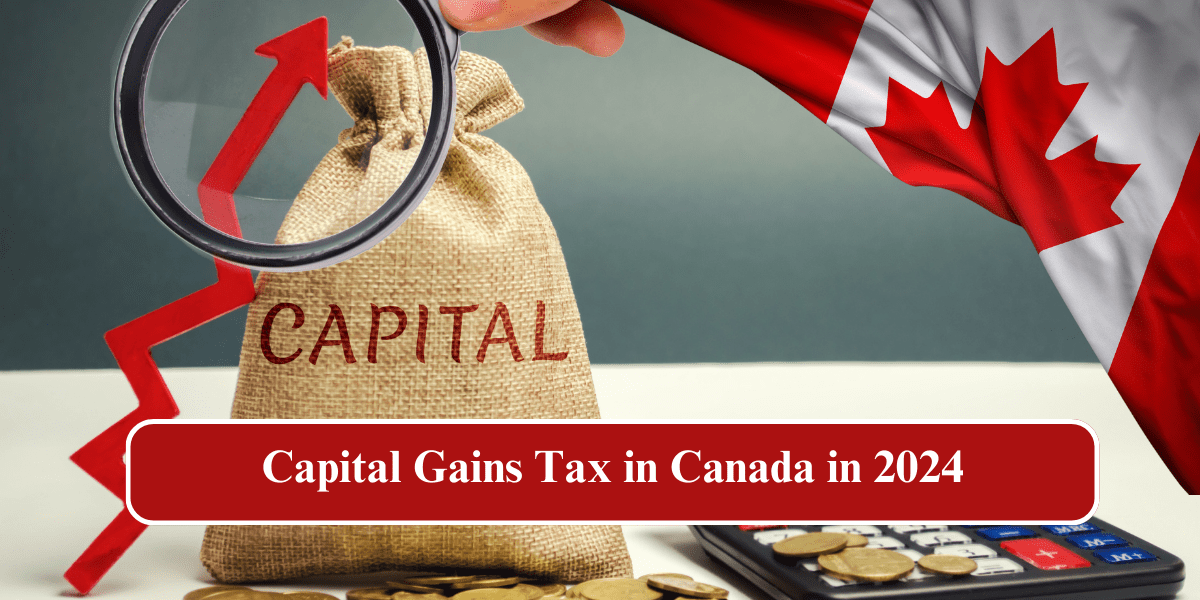If you’ve recently made a profit from selling an investment, you might need to pay capital gains tax. When you sell an asset in Canada, like stocks, bonds, valuable metals, real estate, or other property, you only report capital gains or losses. These gains or losses are subject to capital gains tax.
This article will focus specifically on gains realized from the sale of securities, particularly stocks. Understanding this type of taxation can help you develop personalized tax-saving strategies.
Please note that while this article provides general information, it does not constitute tax or investment advice. For tailored support, consult a tax or investment professional.
Table of Contents
What is capital gains tax?
Capital gains tax is a fee based on the increase in value of an investment or asset, such as stocks, mutual funds, or real estate, from the original purchase price. If you sell an investment or asset for more than what you initially paid, the profit is considered a capital gain and is subject to tax.
Capital gains are categorized as “realized” or “unrealized.” Realized capital gains occur when you sell an investment or asset for a profit. Unrealized capital gains happen when the value of your investments increases, but you haven’t yet sold them. While unrealized gains can be gratifying, they are not taxable until you sell the investment.
Keep in mind that individual circumstances vary, so it’s always advisable to consult a tax professional to understand what applies to your specific situation.
| ontario trillium benefit payment dates 2024 |
| ctc monthly payments schedule |
| 300 child tax credit |
| ctc deposit date fixed |
| 2024 child tax credit |
What is a capital gains loss?
A capital loss happens when an investment or asset loses value compared to its purchase price. However, there’s a benefit to capital losses: they can be used to offset capital gains, which can lower your tax liability.
In Canada, if you have capital losses without any capital gains to offset in the current year, the CRA permits you to use those losses to reduce capital gains from the previous three years. Additionally, you can carry forward a net capital loss to offset future capital gains at any time.
Capital gains tax rate in Canada
In Canada, capital gains are taxed as part of your income rather than as a separate tax. Currently, you pay tax on 50% of your capital gains, regardless of the total amount. However, starting June 25, 2024, the tax rate will change. You will pay tax on 50% of your annual capital gains up to $250,000. For any gains exceeding $250,000, the taxable portion increases to 66.67%. For example, if you make a $300,000 gain in a year, 50% of the first $250,000 ($125,000) will be taxed as income. The remaining $50,000 will be taxed at 66.67%, amounting to $33,335. Therefore, only $158,335 of your $300,000 gain will be included in your taxable income.
For corporations and trusts, there is no threshold: 66.67% of all capital gains are taxable. Thus, if a trust earns $300,000 from selling stocks, 66.67% of that amount ($200,000) will be taxed.
How to calculate tax on a capital gain in Canada
Before calculating your capital gains, you need to determine your adjusted cost base (ACB). This figure helps you save money and is relatively simple to compute. ACB is essentially your original purchase price, adjusted to include any additional purchase costs.
For instance, if you bought 40 shares of $KALE at $10 each and then purchased 20 more shares at $12.50 each a month later, your total cost base would be calculated as follows:
- For the initial 40 shares: 40 shares × $10 per share = $400
- For the additional 20 shares: 20 shares × $12.50 per share = $250
So, your total cost base is $400 + $250 = $650.
To find the cost per share, divide the total cost base by the total number of shares: $650 ÷ 60 shares = $10.83 per share.
If later in the year you sell 30 shares of $KALE for $15 each, you would receive $450 from the sale (minus any fees). However, this amount is not your capital gain. To determine your capital gain, subtract the ACB of the shares sold from the sale proceeds. The ACB for 30 shares is $10.83 × 30 = $324.90. Thus, your capital gain is $450 – $324.90 = $125.10.
Many financial institutions track your capital gains and adjusted cost base for you, so you may not need to perform these calculations yourself. However, if you have a self-directed account, remember that your taxable capital gain is the difference between the sale price of your asset and its adjusted cost base.
How to reduce or avoid capital gains in Canada
Even though you might have to pay capital gains tax, here are some ways to lower the amount you have to pay:
Option 1: Offset your capital gains with capital losses
In some cases, capital losses can be used to wipe out capital gains. If you have both capital gains and capital losses in the same tax year, apply the losses to reduce the gains. If you only have capital losses and no capital gains from the past three years to apply them to, you can carry forward the losses to offset any future capital gains.
Option 2: Put your earnings in a tax shelter
Tax shelters provide legal methods to protect your investments from taxes. As long as your investments stay within these shelters, you can buy and sell stocks freely without facing immediate tax consequences. Examples of tax-sheltered accounts include Registered Retirement Savings Plans (RRSPs), Tax-Free Savings Accounts (TFSAs), Individual Retirement Accounts (IRAs), and Registered Education Savings Plans (RESPs). With these accounts, you don’t need to worry about capital gains or losses until you withdraw your funds.
Option 3: Donate assets to charity
When you donate to a registered charity, you receive a tax receipt that allows you to claim a credit on your income tax for a portion of your donation. Instead of giving cash, you can also transfer stocks directly to the charity (an “in-kind” donation). This method helps you rebalance your portfolio without triggering capital gains taxes, as you’re transferring ownership rather than selling the stock. You’ll get a tax receipt based on the stock’s fair market value on the day of the transfer. It’s a good idea to consult with a tax professional to ensure you follow the correct procedure or reach out to the charity to confirm their ability to accept stock donations and any specific steps required.
Option 4: Engage in tax-loss harvesting
“Tax-loss harvesting involves selling underperforming shares to realize a capital loss, which can then offset capital gains. Some investment platforms even automatically handle this process for you.
However, be cautious: the CRA scrutinizes transactions where you sell an asset at a loss and then quickly repurchase it. This is known as a ‘superficial loss,’ and it applies to assets deemed ‘identical’ by the CRA.
For instance, you cannot sell a low-performing exchange-traded fund (ETF) and then buy another ETF tracking the same index within 30 days, nor can you sell and then repurchase shares of the same company within a short period. If the CRA considers your transaction a superficial loss, you won’t be able to use it to offset capital gains, and it could also lead to increased scrutiny or an audit in the future.”
Option 5: Co-own your assets with a partner
If you or your partner sell a secondary property that is solely in one person’s name and the capital gain exceeds $250,000, 66.67% of the gain will be taxed. However, if both of you are co-owners of the property, the total gain can be split between the two of you. This division could reduce the taxable portion to 50%, provided that each person’s annual capital gains stay below the $250,000 threshold.
FAQs
How much tax do you pay on capital gains in Canada?
In Canada, capital gains aren’t taxed separately. Instead, they are included as part of your income and taxed at your marginal rate. Currently, 50% of your capital gains are taxable, regardless of the total amount of gains you have.
What are the new capital gains tax rules for 2024 in Canada?
The 2024 Budget has raised the capital gains inclusion rate to two-thirds for both corporations and trusts. For individuals, the rate will also increase to two-thirds on the portion of capital gains exceeding $250,000, applicable to gains realized on or after June 25, 2024.




